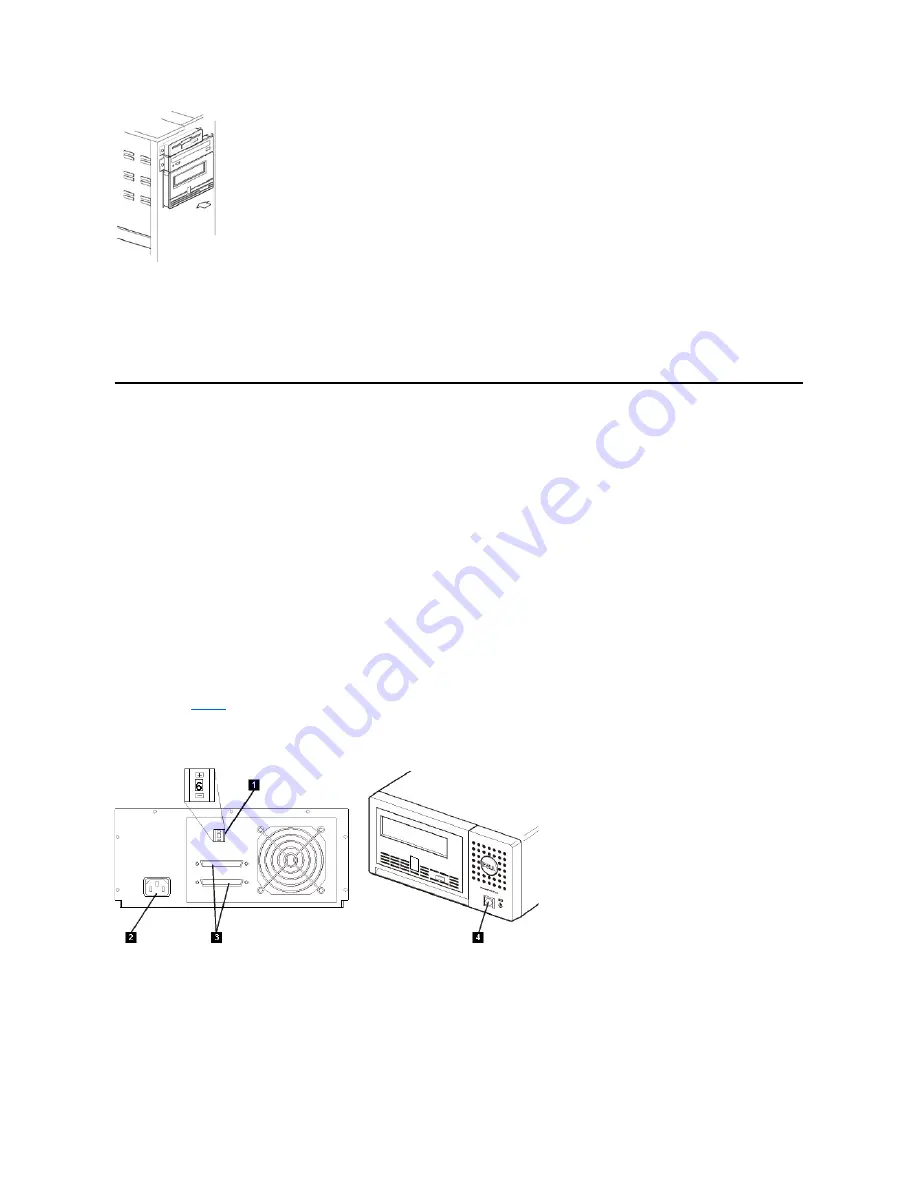
Step 9
—
Connecting Computer Power and Testing Power to the Tape Drive
Connect the power cord to the system and to the electrical outlet. To ensure that the drive is receiving power, watch for the following while turning on the
power to the system:
1.
The single-character display presents a series of random characters.
2.
The single-character display becomes blank (not lit).
3.
The status light briefly becomes solid amber, then becomes solid green.
Installing External Drives
Installing the Drive
—
Prerequisites
The tape drives are Ultra160 SCSI devices designed to operate on a low voltage differential (LVD) SCSI bus with a burst transfer rate of 160 MB per second.
Do not use the drive on a single-ended SCSI bus, as performance is restricted. Do not use on the same bus as other single-ended devices, as this will switch
the LVD's host adapter into single-ended mode and restrict performance. We recommend that a dedicated host bus adapter is used for the tape drive.
Your system must have a properly installed and configured SCSI host adapter or a SCSI controller on the motherboard (SCSI-2 or SCSI-3 compliant) with driver
software that supports the tape drive. Check the system documentation for the specification of any built-in SCSI channels. Do not connect to a RAID controller
channel; these are for disk drives only. Consult your supplier for details.
The tape drive will attach to a system with a HD-68 LVD SCSI connector (68 pins). If your system or host bus adapter is equipped with a very high density
(VHD) wide SCSI connector, you will need to order a 68-pin HD-to-VHD converter or 68-pin HD-to-VHD cable.
Installing the Drive
—
Step-By-Step Instructions
Step 1
—
Setting the SCSI ID
Your tape drive is shipped with a default SCSI ID of 6, but it can be assigned any unused ID between 0 and 15. Do not use SCSI ID 7, which is reserved for the
SCSI controller, or SCSI ID 0, which is typically assigned to the boot disk. We do not recommend installing the drive onto a narrow SCSI bus, as this will restrict
performance.
Determine whether you need to change the SCSI ID from the default of 6.
Change the tape drive's SCSI ID, if necessary. Use a small screwdriver or a ball-point pen to press the indented SCSI ID selector buttons on the rear panel
(see number 1 in
Figure 7
) until the required value is displayed. Do not use a pencil because small bits of lead could contaminate the drive. The computer and
the tape drive SCSI IDs are only checked at power-on. To change the SCSI ID after installation, power down both the system and the tape drive, change the
drive's SCSI ID, power up the tape drive, and then power up the system.
Figure 7. Rear Panel of the External Tape Drive
1.
SCSI address switch
2.
Power receptacle
3.
External SCSI connectors
4.
Power on/off button
Step 2
—
Positioning the Tape Drive
Position the tape drive anywhere that is convenient to the system. The only restrictions are the length of the power cord and the length of the SCSI cable.
Recommended locations are:
l
Away from high-traffic areas, especially if the floor is carpeted.















































